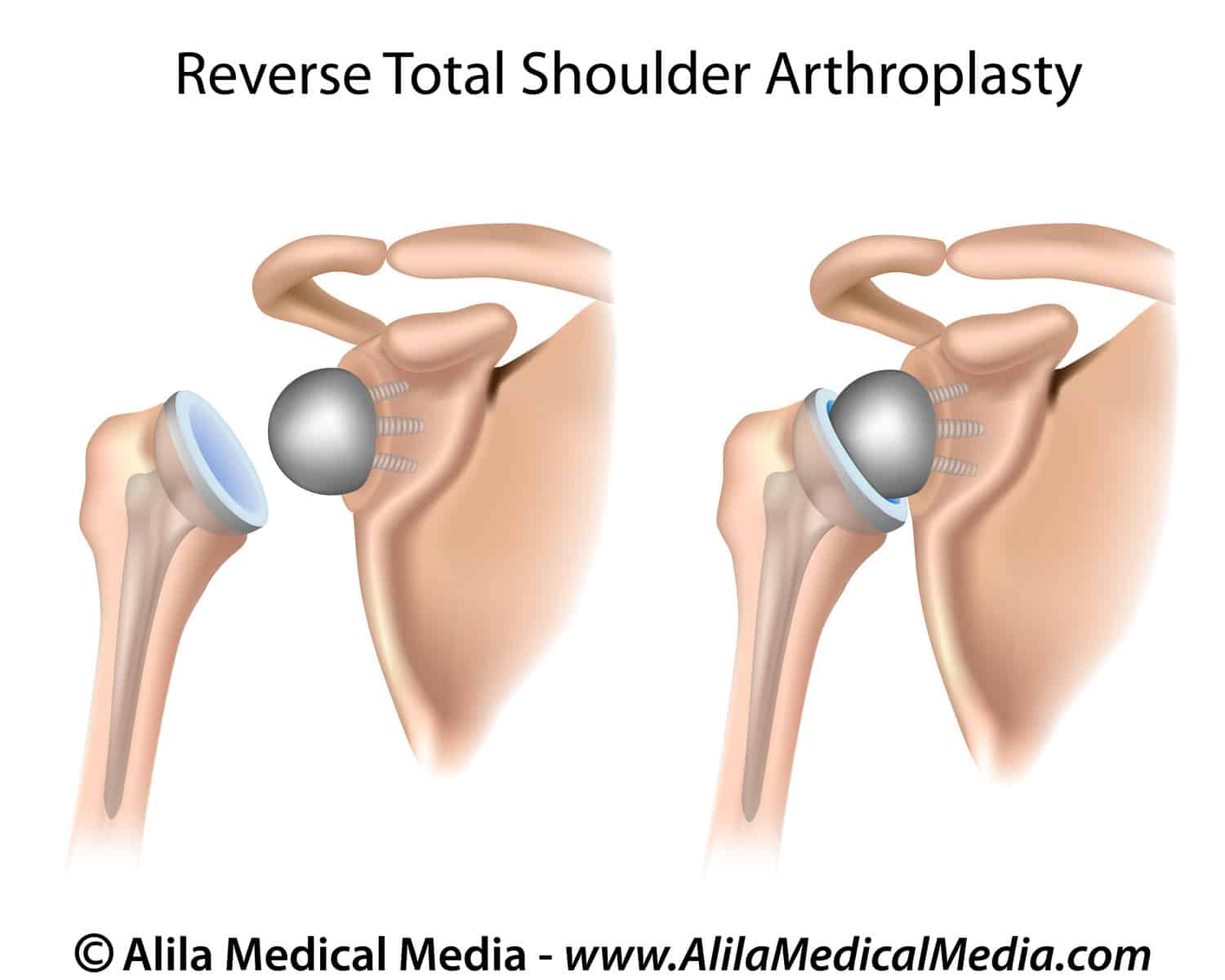
Reverse Shoulder Replacement
Reverse Total Shoulder Arthroplasty
Reverse total shoulder arthroplasty is a joint replacement surgery that can be performed for a variety of conditions where the rotator cuff tendons are badly damaged and beyond repair. These rotator cuff problems can occur in association with arthritis, shoulder instability, failure of a previous joint replacement or inability to raise the arm against gravity. Reverse shoulder replacement surgery changes the mechanics of the shoulder transferring more of the load to the deltoid muscle and less load to the rotator cuff muscles for function. The best clinical results for a reverse replacement are seen in patients who have some functioning rotator cuff tendons/muscles.
In the reverse total shoulder, the ball and socket are replaced, but they are reversed. The socket portion of your shoulder is replaced with a prosthetic metal ball and the ball portion of your shoulder is replaced with a plastic cup that is attached to the top of a metallic stem placed within the humerus, the upper arm bone.
Anatomy of the Shoulder
The shoulder is made up of two joints, the acromioclavicular joint and the glenohumeral joint. The acromioclavicular joint is where the acromion, part of the shoulder blade (scapula) and the collar bone (clavicle) meet. The glenohumeral joint is where the ball (humeral head) and the socket (the glenoid) meet. The rotator cuff connects the upper arm bone to the shoulder blade and is made up of the tendons of four muscles, the supraspinatus, infraspinatus, teres minor and the subscapularis. The deltoid muscle is the muscle that forms the rounded curve of the shoulder. Tendons attach muscle to bone. Muscles in turn move bones by pulling on the tendons. The deltoid and the rotator cuff are important for shoulder movement. The deltoid is a strong muscle that moves the arm away from the body and allows overhead motion. The rotator cuff contributes to this function, but especially keeps the ball tightly in the socket during shoulder motion. The reverse shoulder replacement is special because the parts are made differently so the deltoid can raise the arm without the rotator cuff.
Common Conditions that Require Reverse Total Shoulder Arthroplasty
Your surgeon may recommend reverse total shoulder replacement for the following reasons:
- A torn rotator cuff that cannot be repaired especially when associated with severe pain and/or the ability to raise the arm overhead
- Rotator cuff arthropathy (a specific pattern of arthritis seen in patients with long- standing rotator cuff tears)
- A previous shoulder replacement or other surgery that was not successful
- Chronic or long-standing shoulder instability (ball and socket joint is unstable)
- Some patients with chronic or long-standing arthritis associated with severe loss of shoulder range of motion
- Reconstruction following some tumor surgeries
- Failure of nonoperative treatments such as anti-inflammatories, cortisone injections, or physical therapy
Patients with a poorly functioning deltoid, an axillary nerve injury, active shoulder infection or severe loss of bone stock on the socket or ball are not candidates for a reverse shoulder replacement.